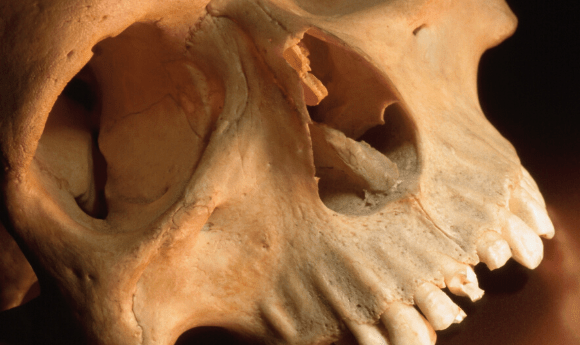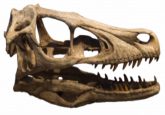Ghost population found hidden in the genome of West African populations

Evidence for a previously unknown species of archaic hominin can be found in the genes of modern-day West African populations.
Utilizing statistics rather than the usual reference DNA, computational biologists from the University of California, Los Angeles (USA) have identified a ghost population, formed from an extinct relative of humans, to which four distinct populations in West Africa can each trace around 8% of their genetic ancestry.
Past research has suggested that other species of humans existed in West Africa, though a lack of fossils or ancient DNA meant scientists struggled to form a greater understanding. Historically, archeologists and genetic researchers have required the use of reference DNA in order to compare and draw conclusions from fossilized genetic material. However, developments in statistical analysis have meant that the team was able to look back hundreds of thousands of years without any reference material.
“This opens a new path in understanding the complexity of human evolutionary history in Africa, where the picture hasn’t been as clear,” commented study co-author Sriram Sankararaman.
By examining over 400 genomes from the four West African populations, all taken from the 1000 Genomes Project, the researchers were able to identify sections of DNA that appeared different to modern-day human genes, thereby coming from an ancient relative. When they found that they were dissimilar to both Neanderthals and Denisovans – an ancient species based in Oceana – the researchers concluded they must come from a heretofore unknown, or ghost, population.
 Evolutionary relationship between extinct giant ape and living orangutan revealed
Evolutionary relationship between extinct giant ape and living orangutan revealed
Researchers have reconstructed the evolutionary relationship between a 1.9 million-year-old extinct, giant primate and the living orangutan using the oldest genetic material ever recovered from a fossil in a subtropical area.
Branching off from the hominid evolutionary tree around 100, 000 years prior to the Neanderthals, the archaic hominin is believed to have coexisted with modern humans in Africa, with some fossils suggesting interbreeding between the species. Forming a similar relationship to that of ancient Europeans and the Neanderthals, the ancient hominin has been linked to the Mende people of Sierra Leone, the Yoruba and Esan people of Nigeria and other groups found in western areas of The Gambia.
“We don’t need reference DNA from fossils of the archaic hominin to confirm that, somewhere deep in our ancestry, humans intermixed with them. We can now see that such events took place by looking at our DNA itself,” added Sankararaman. “They seem to have made a pretty substantial impact on the genomes of the present-day individuals we studied. They account for 2% to 19% of their genetic ancestry.”
Though evidence for the archaic population’s DNA has been found, it is difficult to determine whether the two species interbred just the once or multiple times over thousands of years. It is also possible that there were multiple populations of archaic hominin species, not just the one. Now, the researchers aim to look at the genes in greater detail, work out what they do and why they have been retained over the years.





